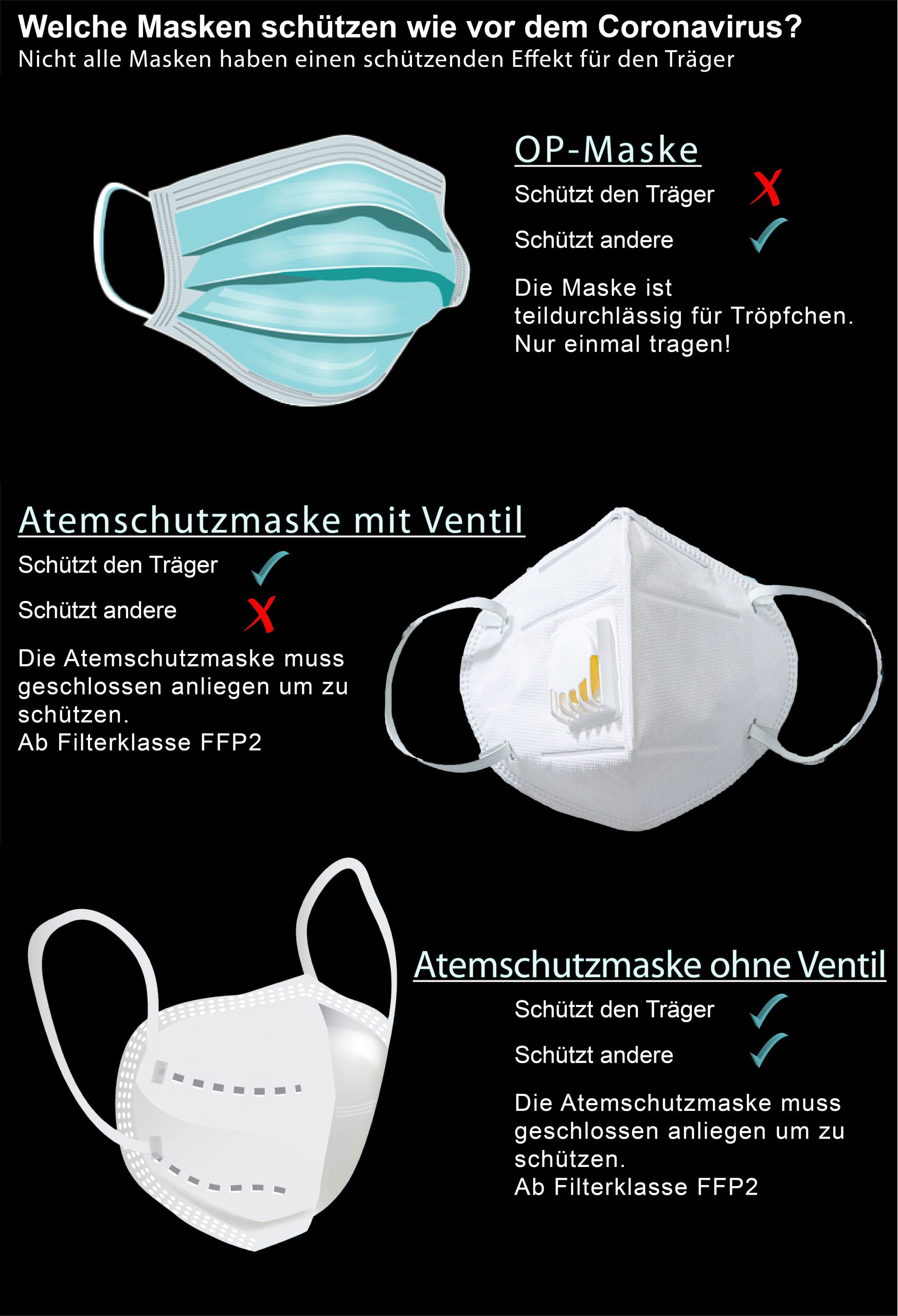Respiratory protection masks
Face Protection Masks
protection against infection
Reduce the risk of infection for yourself and your family.
TOGETHER SLOW DOWN THE SPREAD
In order to reduce the burden on the health care system and ensure the care of seriously ill patients, it is important that the coronavirus spreads as slowly as possible.
Protection of others
Mouth and nose protectors can catch droplets that are emitted when you speak, cough or sneeze, for example, thus reducing the risk of infecting other people.
Fast delivery
Easy to order online, products partly available from stock.

Frequently asked questions

The mouth-nose protector protects against liquid splashes.
The respirator, on the other hand, is particle and aerosol filtering and protects against the inhalation of the smallest airborne particles and droplets.
Respirators are subject to various regulations and standards around the world, which specify certain required characteristics and performance features that the respirator must meet to comply with the standard.
These breathing masks protect against viruses such as the corona virus:
FFP2, FFP3, N95, KN95, P2, DS
During an epidemic, pandemic or emergency situation, health authorities often refer to these standards when making recommendations for respirators, for example, they recommend "use FFP2, N95, or equivalent". According to the official 3M comparison, the following masks can be considered as "equivalent" are designated in the filtering of Bioaerosols (e.g. viruses, coronavirus)air pollution PM2.5, or volcanic eruptions:
- FFP2 (Europe EN 149-2001)
- N95 (United States NIOSH-42CFR84)
- KN95 (China GB2626-2006)
- P2 (Australia/New Zealand AS/NZA 1716:2012)
- Korea 1st class (Korea CMOEL - 2017-64)
- DS (Japan JMHLW Notification 214, 2018)
Masks of these standards filter ≥ 94% of all particles up to a size of 0.6 μm from the air breathed. Masks with the standard FFP3 have an even slightly higher filter performance of 99.5% and also protect against toxic dusts of chrome, cobalt, nickel or mould spores.
Coronaviruses are transmitted from person to person by droplets of saliva when breathing, coughing or sneezing. But infection can also occur if infectious secretions reach the hands and then touch the face or mucous membranes. A respiratory mask prevents you from touching the mucous membranes with your possibly contaminated hands.
In order to break the chains of infection, it is best for everyone to wear a mouth guard when speaking.
the influenza virus is highly infectious, only two viruses are needed to trigger an infection. against this background, a respiratory mask offers the best possible protection if a hazard is present. resolution 609 of the federal institute for occupational safety and health (Bundesanstalt für Arbeitsschutz und Arbeitsmedizin) should also be seen against this background, which recommends the wearing of respiratory masks depending on the hazard.
These respirators are easy to use and can be worn by men, women and even children.
- Take the mask in your hands with the head straps down
- enter the mask with the chin, then pull over the nose, place the lower headband at the neck and the upper headband above the ears
- Adjust nose clip with both index fingers
- Check the seal of the mask - Adjust again if air escapes
